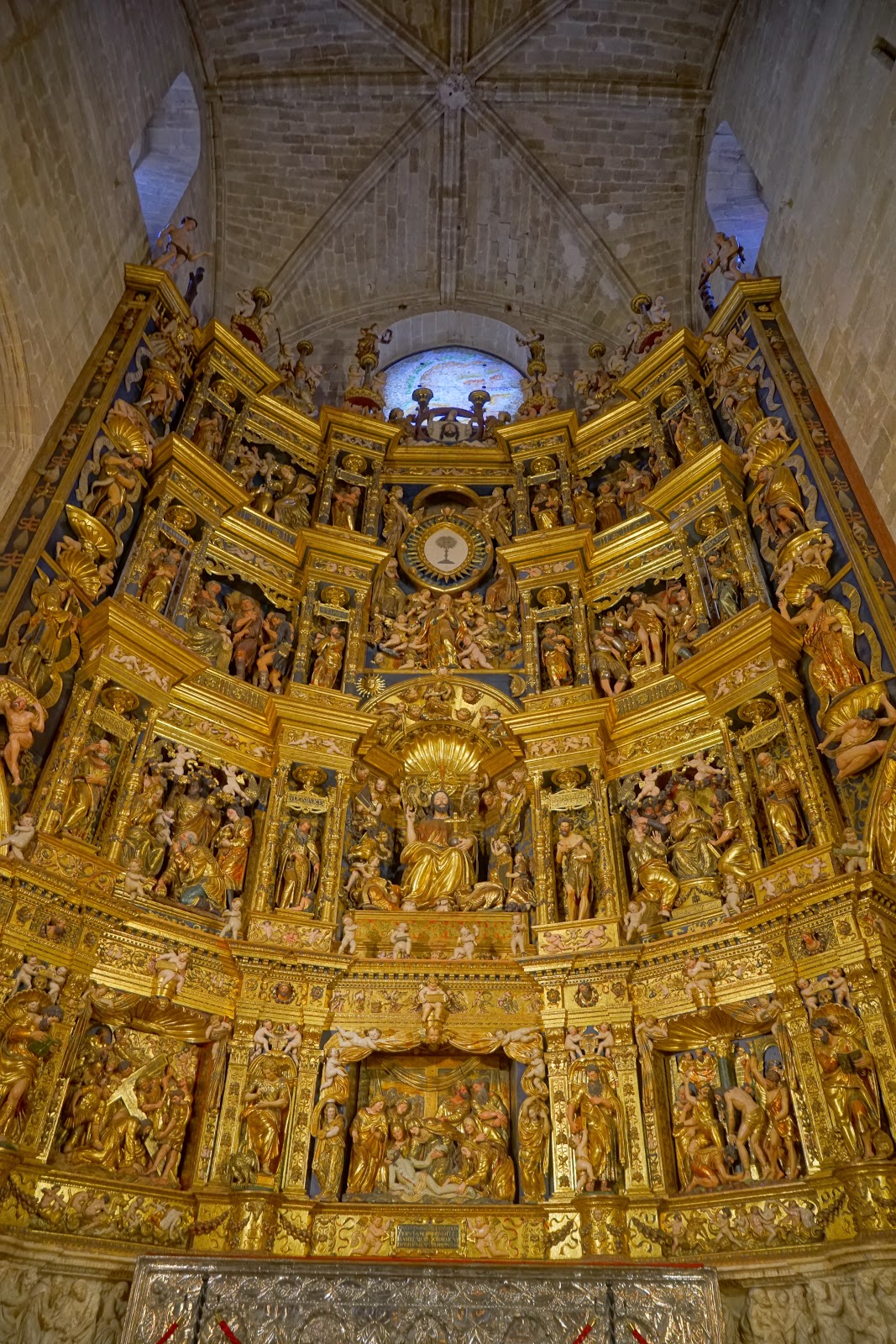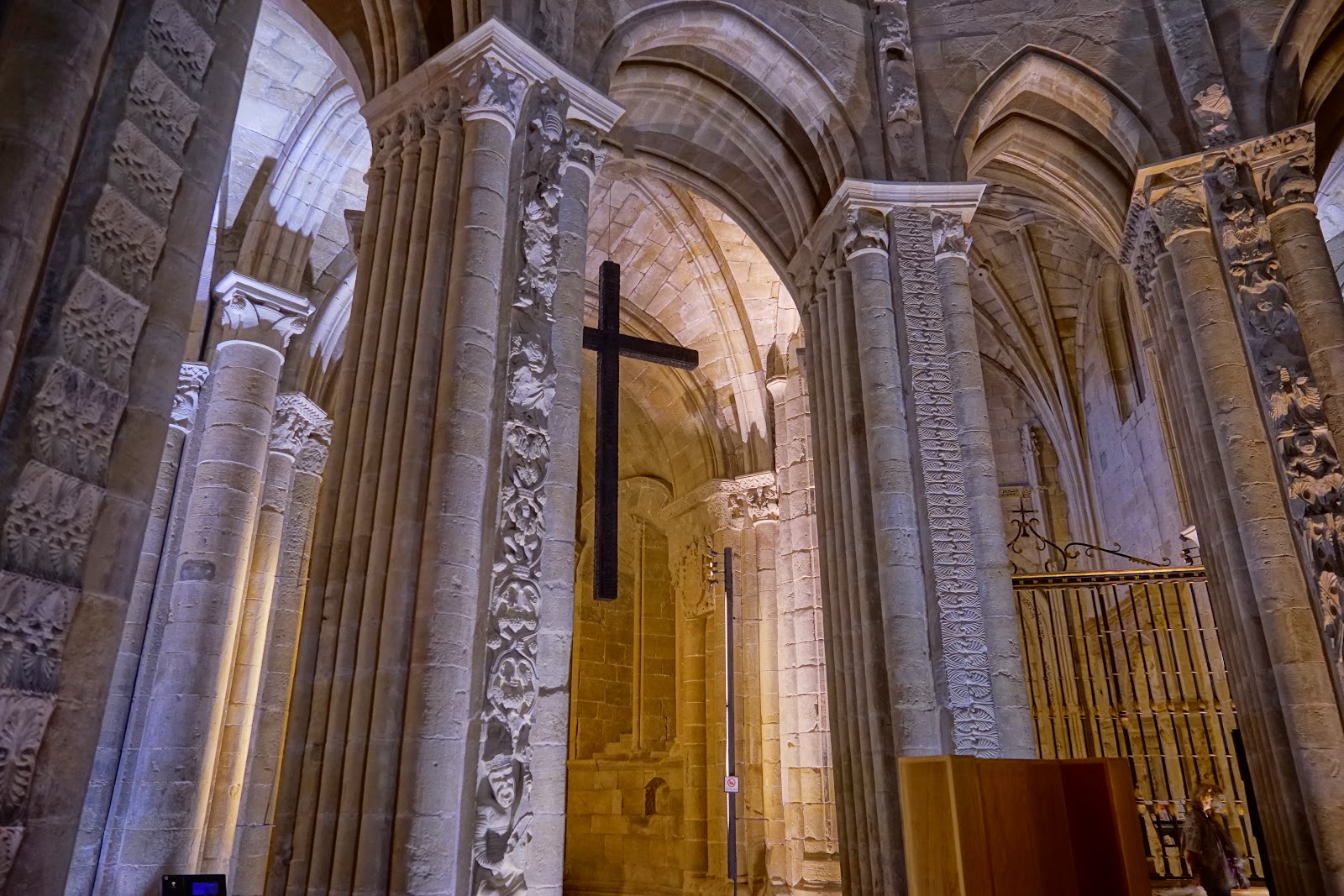.JPG) |
| Suso Monastery: "birthplace of the Spanish language" - Castilian Spanish was first written down here. |
.JPG) |
| Yuso Monastery |
 |
| Yuso: Birth of a... nation? Language? |
 |
| Berceo: Gonzalo de Berceo, a monk poet, was born here. |
.JPG) |
| Our taxi driver taking us to a field near Hermita de Nuestra Senora de Arcos. He picks up a random piece of Roman-era artifact. Tricio in background. |
We return to the same point on the Camino in Najera about two hours later. That wipes out any advantage we have over faster walkers who stayed at Ventosa or any earlier stop yesterday. But today's route is only 21km and we happily start at 11am, except the blister in my right foot is becoming a bit sore. The Korean ladies have rented a bike for this stage. A good idea to save some time... and legs. I heard people do this for the Burgos to Leon section that lies ahead, as it is flat and relatively monotonous. Only two towns are along the way today, Azofra and Ciruena. The wide tracks are largely boring but there is some interesting scenery to be encountered.
 |
| Leaving Najera |
.JPG) |
| Harvesting grapes |
.JPG) |
| Red soil of La Rioja which can turn into mud in heavy rain. Thank God we haven't had that problem. |
 |
| A huge field of... turnips? No, sugar beets. |
 |
| A good route to bike today, maybe except for this long uphill leading to Ciruena |
 |
| near Ciruena |
 |
| Keep walking. Toward Santo Domingo. |
 |
| On the way to Santo Domingo |
.JPG) |
| On the way to Santo Domingo |
 |
| near Santo Domingo |
 |
| The tower in Santa Domingo coming into view! |
 |
| The Parador, the Cathedral, the Tower |
 |
| Inside the parador |
 |
| Santo Domingo: this alter piece has been moved to a side for a visual impact of ... |
 |
| ... these columns, which were hidden behind the altar piece until the mid-90's |
 |
| St Dominique probably would not have liked seeing this large silver piece made in Mexico during colonial times, or .. |
 |
| his own tomb in elaborate alabaster. |
산 밀란 유소 수소 사진보고 정말 그림인줄 알았어요. 유네스코 세계유산으로 지정될 만 하네요. 자전거 탔던 저희 이야기도 실어주시고!! 파라도르 내부 모습이 정말 예쁘네요
ReplyDelete